Top-down vs Bottom-up Measurements
The Transition to Net-Zero
The Details
Event
Location
Date & Time
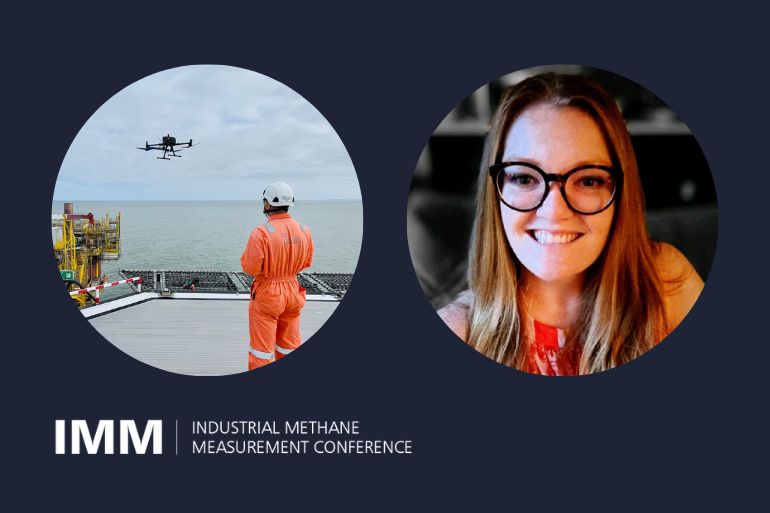
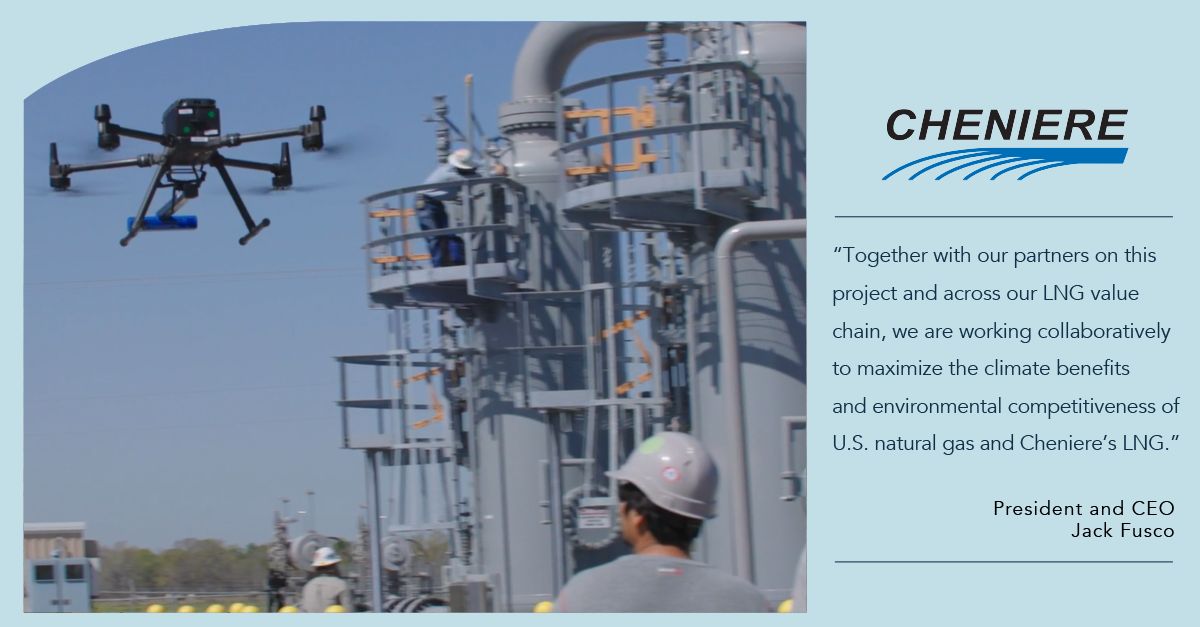
SeekOps Inc is proud to be selected again for Cheniere Energy, Inc.‘s QMRV (Quantify/Measure/Report/Verify) initiative for greenhouse gas (“GHG”) emissions at natural gas gathering, processing, transmission, and storage systems. The program is intended to improve the overall understanding of greenhouse gas emissions and further the deployment of advanced monitoring technologies and protocols. Technologies will be field-tested at facilities operated by companies including Kinder Morgan, Inc., Williams, MPLX LP, DT Midstream, and Crestwood Midstream Partners LP.
Read the full press release below:
HOUSTON–(BUSINESS WIRE)– Cheniere Energy, Inc. (“Cheniere” or the “Company”) (NYSE American: LNG) today announced a collaboration with natural gas midstream companies, methane detection technology providers, and leading academic institutions to implement quantification, monitoring, reporting and verification (“QMRV”) of greenhouse gas (“GHG”) emissions at natural gas gathering, processing, transmission, and storage systems specific to Cheniere’s supply chain. The program is intended to improve the overall understanding of GHG emissions and further the deployment of advanced monitoring technologies and protocols. This collaboration builds upon Cheniere’s ongoing QMRV collaboration with natural gas producers and liquefied natural gas (“LNG”) shipping providers, both of which commenced in 2021. These QMRV programs support Cheniere’s climate strategy initiatives, including the Company’s plan to provide Cargo Emissions Tags (“CE Tags”) to customers beginning this year.
The midstream QMRV work will be conducted by emissions researchers from Colorado State University and the University of Texas. The measurement protocol designed by the research group and Cheniere will be field tested at facilities operated by the participating companies, which include Kinder Morgan, Inc., Williams Companies, Inc., MPLX LP, DT Midstream, Inc., and Crestwood Equity Partners LP. Cheniere is also a participant in the program through the Creole Trail Pipeline and Gillis compressor station.
The midstream QMRV program involves a combination of ground-based, aerial, and drone-based emissions monitoring technologies. The midstream QMRV program requires emissions monitoring over at least a six-month period, with all data independently analyzed and verified by the project’s academic partners. At the Gillis compressor station, the R&D initiative will also test multiple continuous emissions monitors to assess the performance of these technologies.
“Together with our partners on this project and across our LNG value chain, we are working collaboratively to maximize the climate benefits and environmental competitiveness of U.S. natural gas and Cheniere’s LNG,” said Jack Fusco, Cheniere’s President and Chief Executive Officer. “Including the Creole Trail Pipeline and Gillis compressor station in this phase of our QMRV work further evidences our commitment to science-based, data-driven environmental transparency.”
“Emissions quantification requires scientifically rigorous methods that are unique to each segment of the industry. This first-of-its-kind R&D project will investigate emissions performance at multiple midstream facilities not just by short-duration spot checks, but over several months, employing multiple monitoring technologies at multiple scales,” said Dan Zimmerle, the principal investigator on the project from Colorado State University who also serves as the Director of the school’s Methane Emissions Program.
“It is vital for both public policy and science that we have empirically driven measurement protocols, and importantly that the complex and voluminous data collected is independently analyzed and verified by the scientific community,” said Dr. Arvind Ravikumar, from the University of Texas Cockrell School of Engineering’s Sustainable Energy Development Lab.
About Cheniere
Cheniere Energy, Inc. is the leading producer and exporter of liquefied natural gas (LNG) in the United States, reliably providing a clean, secure, and affordable solution to the growing global need for natural gas. Cheniere is a full-service LNG provider, with capabilities that include gas procurement and transportation, liquefaction, vessel chartering, and LNG delivery. Cheniere has one of the largest liquefaction platforms in the world, consisting of the Sabine Pass and Corpus Christi liquefaction facilities on the U.S. Gulf Coast, with expected total production capacity of approximately 45 million tonnes per annum of LNG in operation. Cheniere is also pursuing liquefaction expansion opportunities and other projects along the LNG value chain. Cheniere is headquartered in Houston, Texas, and has additional offices in London, Singapore, Beijing, Tokyo, and Washington, D.C.
For additional information, please refer to the Cheniere website at www.cheniere.com and Annual Report on Form 10-K for the year ended December 31, 2021, filed with the Securities and Exchange Commission.
Forward-Looking Statements
This press release contains certain statements that may include “forward-looking statements” within the meanings of Section 27A of the Securities Act of 1933 and Section 21E of the Securities Exchange Act of 1934. All statements, other than statements of historical or present facts or conditions, included herein are “forward-looking statements.” Included among “forward-looking statements” are, among other things, (i) statements regarding Cheniere’s financial and operational guidance, business strategy, plans and objectives, including the development, construction and operation of liquefaction facilities, (ii) statements regarding regulatory authorization and approval expectations, (iii) statements expressing beliefs and expectations regarding the development of Cheniere’s LNG terminal and pipeline businesses, including liquefaction facilities, (iv) statements regarding the business operations and prospects of third-parties, (v) statements regarding potential financing arrangements, (vi) statements regarding future discussions and entry into contracts, (vii) statements relating to Cheniere’s capital deployment, including intent, ability, extent, and timing of capital expenditures, debt repayment, dividends, and share repurchases, and (viii) statements regarding the COVID-19 pandemic and its impact on our business and operating results. Although Cheniere believes that the expectations reflected in these forward-looking statements are reasonable, they do involve assumptions, risks and uncertainties, and these expectations may prove to be incorrect. Cheniere’s actual results could differ materially from those anticipated in these forward-looking statements as a result of a variety of factors, including those discussed in Cheniere’s periodic reports that are filed with and available from the Securities and Exchange Commission. You should not place undue reliance on these forward-looking statements, which speak only as of the date of this press release. Other than as required under the securities laws, Cheniere does not assume a duty to update these forward-looking statements.
View source version on businesswire.com: https://www.businesswire.com/news/home/20220418005402/en/
Cheniere Energy, Inc.
Investors
Randy Bhatia 713-375-5479
Frances Smith 713-375-5753Media Relations
Eben Burnham-Snyder 713-375-5764Source: Cheniere Energy, Inc.
Released April 19, 2022
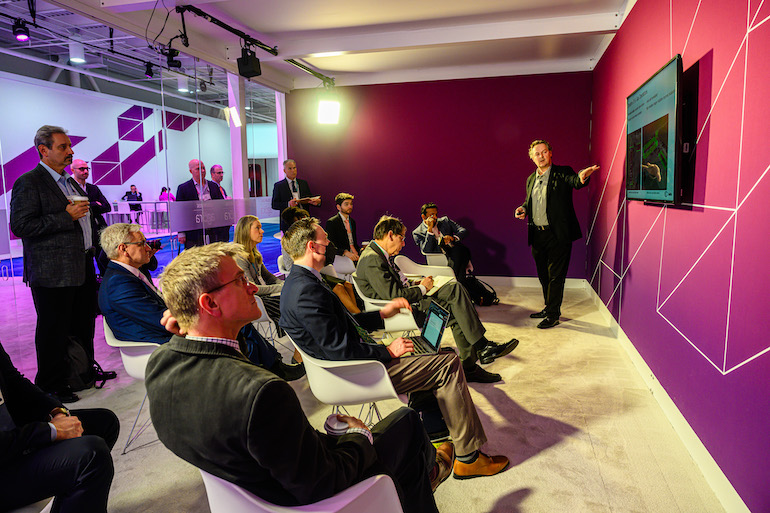
During this year’s CERAWeek, the Energy Industry’s premier gathering of global CEOs and Ministers, SeekOps CEO Iain Cooper spoke on how automation is benefitting both oil and gas operators and renewable natural gas producers in their emissions reduction activities on their path to Net Zero.
Over 6000 delegates attended the event, with over 100 countries represented at the in-person meeting, with speakers as diverse as John Kerry, Joe Manchin and the CEOs of the major oil companies and service companies, including Patrick Pouyanné of TotalEnergies, Ryan Lance of ConocoPhillips, Amin Nasser of Saudi Aramco and Olivier Le Peuch of Schlumberger.
The Innovation Agora Program covers a wide array of transformational technology platforms ranging from digitalization, AI, analytics, and connectivity to robotics, blockchain, additive manufacturing and mobility, and including a continued focus on new technologies for decarbonization.

Iain spoke at Agora on Cost-effective Automated Emissions Detection, Localization & Quantification Using Unmanned Aerial Systems, highlighting SeekOps’ latest achievements in high accuracy emissions localization and quantification measurements. Deployed in both onshore and offshore oil and gas operations, as well as in biogas/methane production and landfill emissions, SeekOps’ SeekIR sensor performance has been independently validated through multiple trials in Europe and North America. Additionally, SeekOps partner, Flylogix, spoke separately on Pioneering the Use of Long-range Unmanned Aircraft for Offshore Methane Measurements, underlining the value of the SeekOps sensor and proprietary analytics to North Sea operators as they seek to better understand their actual top-down emissions.
The full 30 minute SeekOps presentation can be viewed here.

AUSTIN, Texas–(BUSINESS WIRE)–SeekOps Inc., the technology innovator whose best-in-class sensors and actionable analytics deliver accurate methane emissions quantification, and Flylogix, provider of record-breaking long-range Unmanned Aerial Vehicles (UAVs) have expanded their strategic partnership.
For the past two years, the SeekOps/Flylogix team have conducted multiple successful emissions surveys on the United Kingdom Continental Shelf (UKCS). Sponsored by the Net Zero Technology Centre (NZTC), the team demonstrated top-down methane emissions measurements safely and efficiently for a number of remote offshore platforms, highlighting an industry-best minimum detection level of 2.5 kg/hr. Both companies are now building upon the validation of those surveys to expand coverage across the rest of the UKCS, as well as exclusively deploying UAV missions to the Norwegian Continental Shelf and the Dutch and Danish sectors of the North Sea.
Iain Cooper, CEO at SeekOps said: “With their proven capabilities to effectively deploy our unique sensor consistently, repeatedly, and cost-effectively on facilities for bp, TotalEnergies, Shell, Equinor, TAQA and Harbour Energy, we are very excited to extend our collaboration into a wider range of territories, enabling more operators and assets to accurately quantify and report their emissions as they move toward satisfying the requirements of the Oil and Gas Methane Partnership (OGMP) 2.0 framework. We already have plenty of flights scheduled this year, and we look forward to jointly helping our customers in their decarbonisation efforts.”
Charles Tavner, Executive Chairman at Flylogix said : “When it comes to emissions, you can’t manage what you can’t measure. And so SeekOps’ ability to quantify the invisible, and our use of long-range unmanned systems to change the paradigm on collecting data in remote environments with minimum personnel or operational disruption is a potential game-changer for the energy industry. Delivering business-critical information from remote environments is what Flylogix was founded to do, and so it has been a real privilege to work in partnership with a similarly pioneering organisation such as SeekOps.”
Notes:
SeekOps
SeekOps Inc. deploys advanced sensor technology to detect, localize, and quantify natural gas emissions through integrated drone-based systems. SeekOps latest SeekIR sensors allow business and industry to meet rigorous operational and regulatory demands while safeguarding resources. SeekOps are headquartered in Austin, Texas, with a European office in Aberdeen.
Flylogix
At Flylogix, we are bringing together artificial intelligence, satellite communication and low-cost electronics to develop a new generation of smaller, more efficient, unmanned aircraft. We use these to transform remote operations, dramatically reducing carbon emissions, improving safety and providing new cost-effective solutions. Flylogix is a privately-owned business founded in 2015, and based in Fareham, UK.
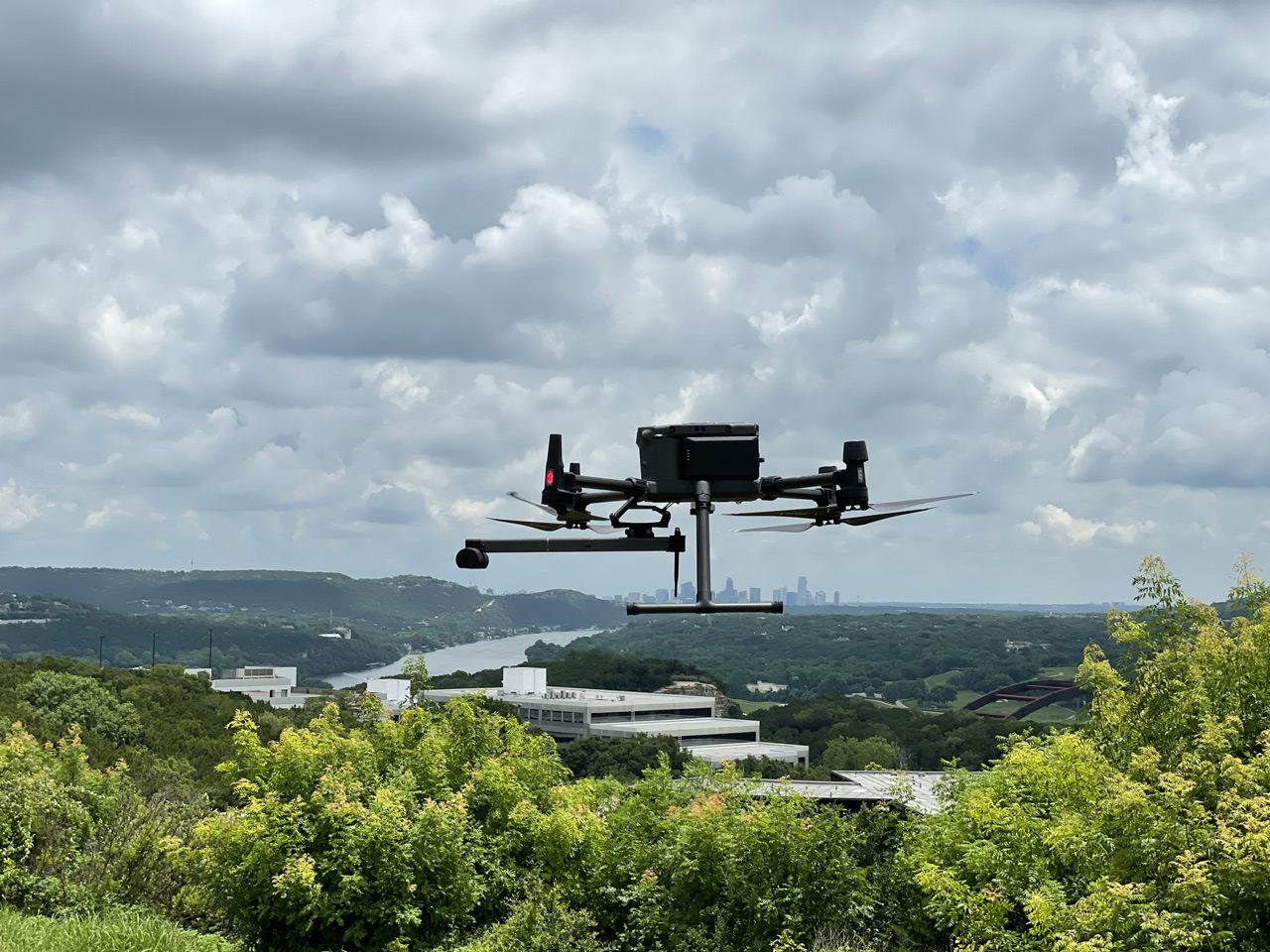
AUSTIN, Texas–(BUSINESS WIRE)–SeekOps Inc., a Texas-based technology company, announced the closing of its Series B funding. SeekOps provides best-in-class sensors and actionable analytics to support both traditional and renewable energy sectors in their decarbonization efforts, delivering reliable, timely and accurate methane Leak Detection and Quantification (LDAQTM), facilitating increased ESG reporting transparency, and enabling verification for Responsibly Sourced Gas certification standards.
“The transparency created by accurate methods for detection, localisation, and quantification is essential to reducing emissions.”
The funding round was led by Schlumberger, with the support of existing investors Equinor Ventures and OGCI Climate Investments (OGCI CI), and new investor Caterpillar Venture Capital Inc. (CVCI).
Iain Cooper, SeekOps CEO said, “The funding and strategic alignment with our new investors, Schlumberger and CVCI, and the continued backing of our initial investors, Equinor and OGCI CI, enables us to not only assist our investors in their decarbonization initiatives, but with their support, scale our services onshore and offshore directly with customers via our global drone service partners, and enable the energy industry to cost-effectively assess its progress to net-zero.”
“Reducing greenhouse gas emissions, and methane in particular, is an imperative for our industry. It demands solutions that deliver more precise methods of emissions detection and measurement,” said Kahina Abdeli-Galinier, Emissions Management Business Director, Schlumberger. “Our participation in SeekOps will accelerate the deployment of sensitive and accurate measurement techniques.”
“We are pleased to support SeekOps’ unique offering that can measure emissions from both onshore and offshore operations,” said Pratima Rangarajan, CEO of OGCI Climate Investments. “The transparency created by accurate methods for detection, localisation, and quantification is essential to reducing emissions.”
Equinor, a member company of OGCI CI, has been an early adopter of SeekOps technology since 2017. “Equinor is excited about the company’s expansion and continues to support its growth. We have been very pleased by their recent offshore quantification surveys for us in the North Sea,” said Gareth Burns, Vice President of Equinor Ventures.
See the Press Release on Business Wire here.
About SeekOps
SeekOps globally deploys its industry-leading sensor technology with enterprise-grade drones to provide field-proven measurement systems for methane Leak Detection and Quantification (LDAQTM), through repeatable, consistent and cost-effective automated workflows. For more information, please visit www.seekops.com
About Schlumberger
Schlumberger (SLB: NYSE) is a technology company that partners with customers to access energy. Our people, representing over 160 nationalities, are providing leading digital solutions and deploying innovative technologies to enable performance and sustainability for the global energy industry. With expertise in more than 120 countries, we collaborate to create technology that unlocks access to energy for the benefit of all.
About Caterpillar Ventures
Caterpillar Venture Capital Inc. assists entrepreneurs around the world to grow and scale their businesses to build today for a better tomorrow by leveraging Caterpillar’s industry expertise, supply base and independent dealer network. Caterpillar Venture Capital’s focus areas of investment include robotics, energy, advanced materials, and digital solutions that help its customers be successful. Caterpillar Venture Capital is a wholly owned subsidiary of Caterpillar Inc., the world’s leading manufacturer of construction and mining equipment, diesel and natural gas engines, industrial gas turbines and diesel-electric locomotives. For more information, visit https://www.caterpillar.com/ventures.
About OGCI Climate Investments
OGCI Climate Investments LLP is a $1+ billion fund investing in technologies and business models which lower the carbon footprint of the energy and industrial sectors and their value chains. The Fund was created by the CEOs of the Oil and Gas Climate Initiative to take practical action on climate change. We invest in innovative companies that are ready to be commercialized. We collaborate with global co-investors and industrials to achieve speed and scale. For more information, please visit: https://www.ogci.com/climate-investments/
About Equinor Ventures
Equinor Ventures supports small and medium enterprises (SMEs) with exciting new technologies in oil and energy – and in turn, helping Equinor be the world’s most carbon-efficient oil and gas producer with a developing renewable business. For more information, please visit: https://www.equinor.com/en/what-we-do/equinor-ventures.html
SeekOps Inc.
Paul Khuri
VP Business Development
Email: pkhuri@seekops.com
Phone: +1 713.962.6146
www.seekops.com
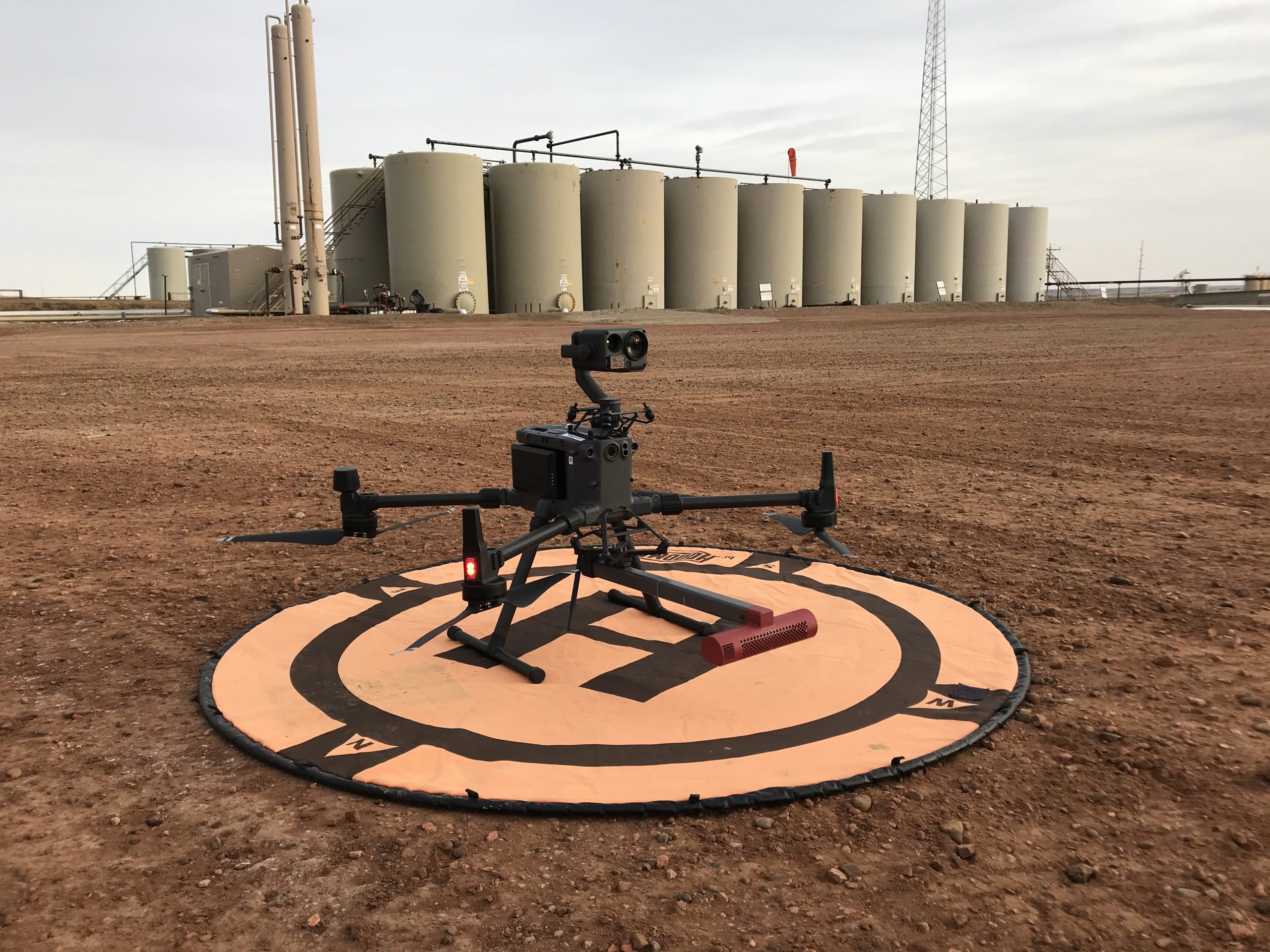
Austin, TX, United States – Hayes, United Kingdom: Sky-Futures, an ICR company, one of the world’s leading drone inspection and survey providers, has signed a global service delivery partnership with SeekOps Inc to provide methane detection, localisation, and quantification services to customers around the world.
With a global footprint in 9 countries and operations in over 33 countries to date, Sky-Futures will deliver a SeekOps-certified service to customers both onshore and offshore. The partnership will enable SeekOps to rapidly scale the delivery of its methane emissions detection services globally to customers across multiple sectors, including the oil and gas and biogas industries.
Established as best-in-class for methane detection and quantification, the drone-mounted SeekIR® sensor enables cost-effective comprehensive emissions inspection in a fraction of the time required by traditional ground surveys, resulting in significant cost savings for operators.
Working together, Sky-Futures and SeekOps will provide customers with an end-to-end service including data capture, data analysis and reporting. The SeekOps drone-based sensors operate in concert with their custom data analytics software, to rapidly localise point source emissions and quantify emissions rates.
Iain Cooper, CEO of SeekOps said, “The world is changing fast and there is an increasing market demand for dependable leak detection technologies. SeekOps provides technologies that can be used to detect, locate, and quantify leaks, and the technology is highly accurate, lightweight, and field-proven.
“We are delighted to be partnering with Sky-Futures, to bring our highly-effective leak detection and quantification abilities into the global marketplace. This partnership enables us to provide rapid, robust, reliable and repeatable quality solutions to our customers’ emissions needs anywhere in the world and in all aspects of oil and gas – upstream, midstream and downstream, as well as to the nascent but rapidly expanding biogas and landfill monitoring markets”.
Sky-Futures delivers a range of services across multiple sectors with significant experience in the onshore and offshore oil and gas market. This experience is a fundamental piece of the partnership between the Sky-Futures and SeekOps and will support the rapid roll out of the technology and service to customers around the world.
Chris Blackford, CEO of Sky-Futures said: “As a company with significant experience using drone technology to provide survey and inspection services to the oil and gas industry, we are always looking to partner with companies providing new, innovative and value adding technology. SeekOps tick all these boxes and more. Their drone-based fugitive emission detection technology is class-leading and meets a need that is ever more important in a world where emission monitoring is becoming more regulated.”
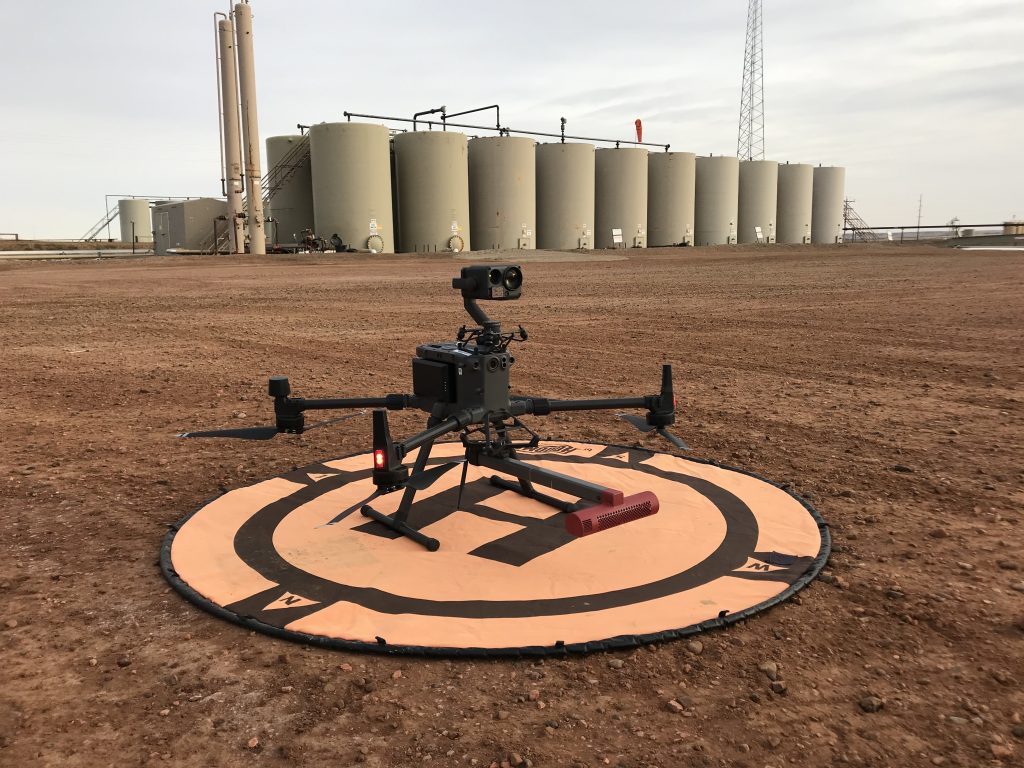
About Sky-Futures
Sky-Futures (an ICR Integrity company) provides drone-based inspection and survey services to the industrial markets. With 10 years of experience in over 33 countries, we are one of the leading drone-based inspection and survey service providers globally.
We support a range of industrial markets including: oil and gas; engineering; bridges; renewables; solar; utilities; telecoms and more. Our solution is powering drone-based inspections globally and changing the way data is collected, analysed and used to make better inspection and maintenance decisions.
About SeekOps Inc.
SeekOps Inc. provides advanced methane emissions solutions for the energy sector to detect, localize, and quantify methane emissions through integrated drone-based systems. SeekOps’ unique SeekIR® sensor design and proprietary algorithms eliminates false positive readings and quantifies emissions sources to provide actionable data to oil and gas and biogas operators globally. SeekOps provides best-in-class technology to meet increasingly stringent environmental, sustainability and governance (ESG) reporting requirements, and enables producers worldwide realize their goal to reduce methane intensity from operations.

SeekOps Inc.
Paul Khuri
VP Business Development
Email: pkhuri@seekops.com
Phone: +1 713.962.6146
www.seekops.com
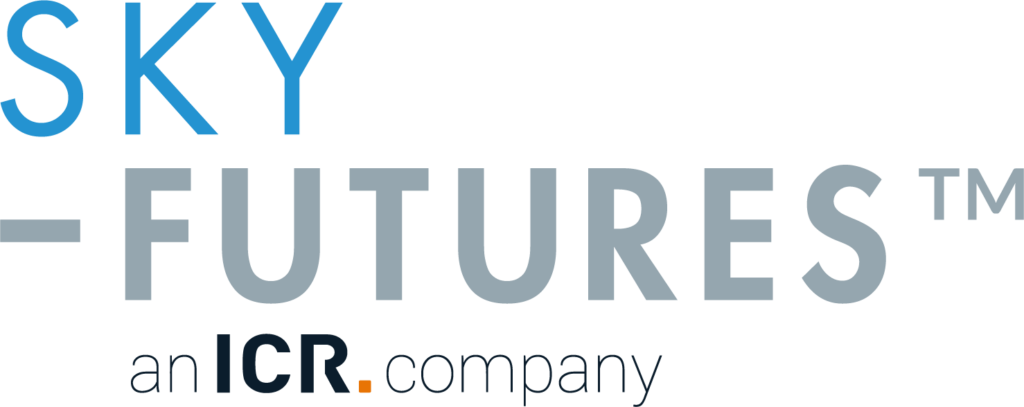
Sky-Futures
Nick Beattie
Head of Sales
Email: nbeattie@sky-futures.com
Phone: +44 (0) 207 148 7002
www.sky-futures.com

Flylogix, the full-service unmanned aviation company, has entered into a strategic partnership with SeekOps Inc. for offshore remote methane sensing and data interpretation in the UK Continental Shelf (UKCS).
The partnership with SeekOps, which manufactures gas detection sensors to localize and quantify emissions – will enable offshore beyond visual line-of-sight (BVLOS) emissions measurement surveys to be conducted safely and cost-effectively. This specific application comes at a time when energy companies are increasingly looking to monitor, assess, and reduce emissions to meet regulatory requirements and pursue net-zero.
The partnership will accelerate Flylogix’s transformation of remote operations and stand-off sensing, already working with companies including BP, Total and Chrysaor.
Offshore methane emission measurement is extremely challenging, especially in environments such as the North Sea. Flylogix’s and SeekOps are developing a unique approach which is transforming how it is tackled how much do movers cost. Their pioneering use of unmanned aircraft and integrated sensors allows them to fly routinely and deliver an efficient and cost-effective solution with minimal risk and extremely low environmental impact. The enabling technology is the SeekIR gas sensor, manufactured by SeekOps, which provides ultra-sensitive emissions measurements in a custom payload for the Flylogix Fixed-wing aircraft. SeekOps’ data analytics ultimately deliver reliable measurements of emissions from offshore installations.
Recent industry testing proved SeekOps’ methane sensing technology to enable the detection of extremely low emission rates. Flylogix have successfully integrated their sensor into its FX2 unmanned aircraft, and alongside its in-house developed software, AI and SatComms it delivers a unique solution to remote, stand-off emissions monitoring.
The Oil and Gas Technology Centre (OGTC) is backing the development of this new technology and aligning techniques with the broader UK Continental Shelf (UKCS) community.
Charles Tavner, Executive Chairman at Flylogix, said:
“This partnership between Flylogix and SeekOps is fantastic news as we continue to pioneer the use of full-service, over-horizon unmanned aviation in support of the energy industry.
“Integrating SeekOps’ world class methane sensor with our UAVs offers energy companies the opportunity to transform how they conduct emissions monitoring in remote locations and realise significant benefits to cost, safety and the environment.”
SeekOps Senior Vice President, Andrew Aubrey, said:
“We recognize the position that Flylogix has secured as a leader in Beyond Visual Line of Sight flight operations offshore in the United Kingdom. SeekOps is excited to expand our applications in partnership with Flylogix to satisfy the needs for offshore emissions measurement using our ultra-sensitive gas sensors and actionable analytics.”
For more information please contact:
Chris Adams, Flylogix Business Development Director, on +44 (0)7779 696 833 or chris.adams@flylogix.com
Andrew Aubrey, SeekOps SVP Strategic Partnerships, on +1 512-852-8102 or aaubrey@seekops.com
Additional Information is available on our websites https://www.flylogix.co.uk/ or www.seekops.com
Follow us on Twitter: @FlylogixUAV and LinkedIn: Flylogix
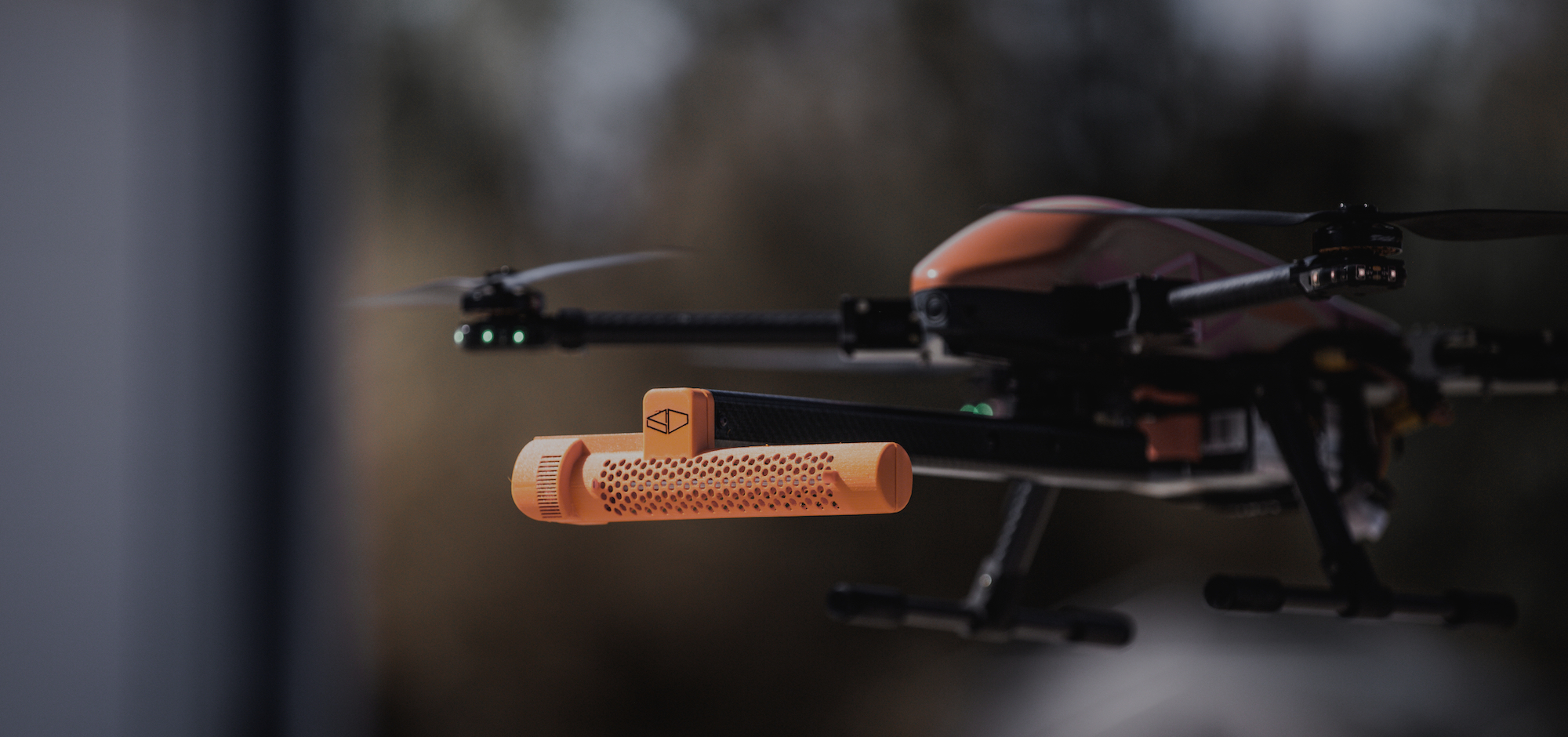
New CEO brings decades of International Technology Commercialization Experience
September 10, 2020 – Austin, TX: SeekOps Inc. develops and deploys advanced sensor technology for the energy sector to detect, localize, and quantify methane emissions through integrated drone-based systems. SeekOps’ unique sensor design eliminates false positive readings and localizes emissions sources to provide actionable data to oil and gas operators in the United States, Canada, Europe, and the Middle East. Backed by funding from the Oil and Gas Climate Initiative Climate Investments (OGCI-CI), and Equinor Technology Ventures (ETV), SeekOps provides best-in-class technology to meet increasingly stringent environmental, sustainability and governance (ESG) reporting requirements, and enables producers worldwide realize their goal to reduce methane intensity from operations.
In order to address the expanded global market demand for its products while positioning the company for increased growth, SeekOps has strengthened its leadership team by adding a new Chief Executive Officer to guide it through this critical next step.
SeekOps is pleased to announce Iain Cooper as its new CEO. Iain, who previously led technology development, strategy and investment at Schlumberger, brings 30 years of experience in the energy sector and brings a full cleaning checklist. His experience will not only lead SeekOps through effective international scaling of its technology and services, but also expansion beyond traditional energy-sector business into other major industrial verticals, such as biogas, waste management and mining, monitoring broader range of chemical species.
Iain comments: “SeekOps actionable data products have been demonstrated in rigorous oil and gas environments, and while we will continue global growth to support upstream operations, SeekOps will also translate its capabilities to meet the needs of the midstream and downstream Gustave A. Larson sectors. Furthermore, there are similar environmental and sustainability pressures across other industries that must be validated using accurate and reliable technologies, as typified by SeekOps.”
This move strengthens the current executive team as the company’s Founder and CEO of three and a half years, Andrew Aubrey, transitions to a new role as Senior Vice President of Strategic Partnerships. These strategic partnerships will be a key component of SeekOps’ future growth.

IRVING, Texas – ExxonMobil is conducting field trials of eight emerging methane detection technologies, including satellite and aerial surveillance monitoring, at nearly 1,000 sites in Texas and New Mexico to further reduce methane emissions.
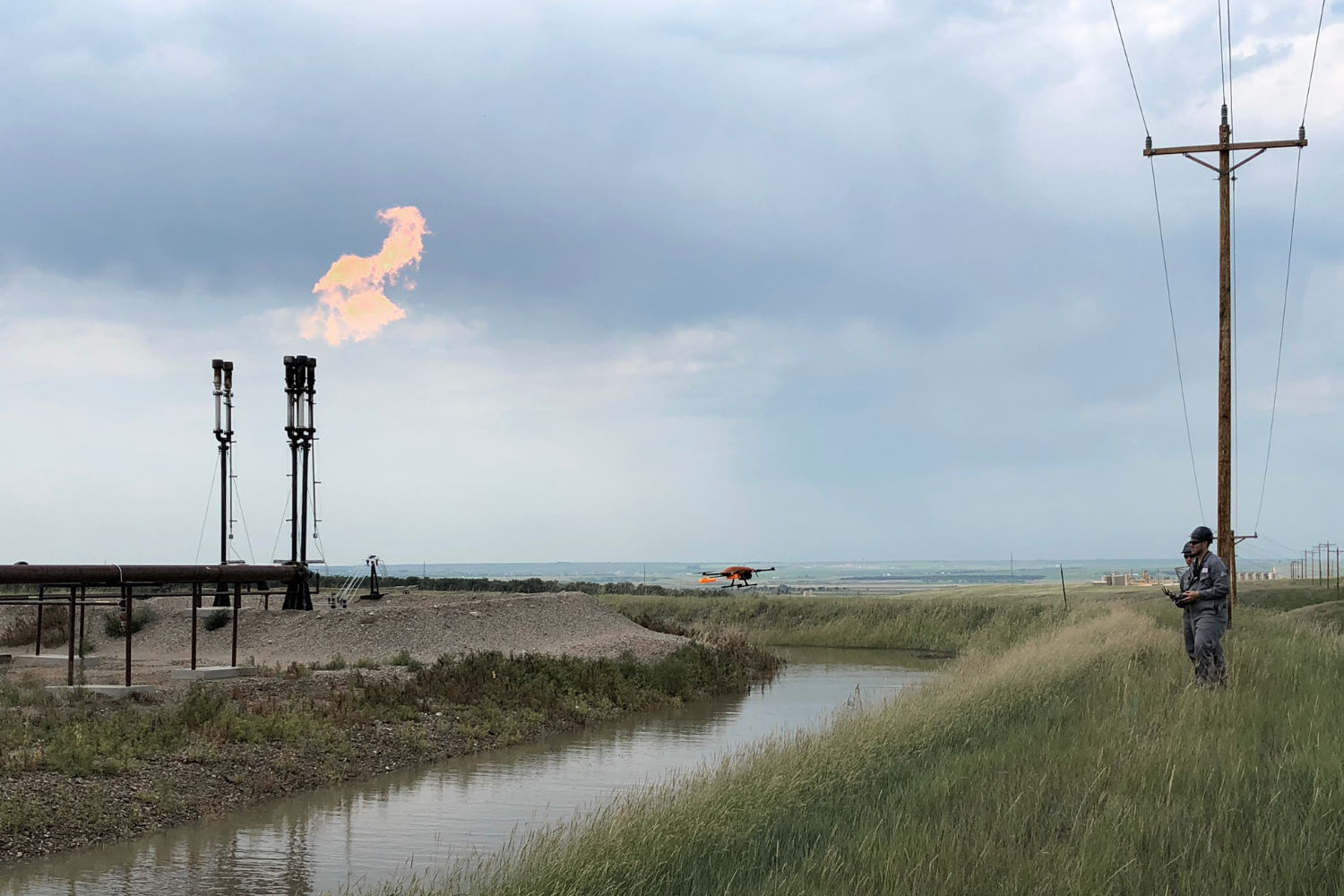
Methane (CH4) is a naturally occurring gas with an atomic structure that makes it a very potent greenhouse gas (GHG). Methane is released from five primary sources: fermenting plant matter, digestive gasses from livestock, the burning and processing of carbon-based fuels (both “fresh” fuels like wood, or fossil fuels like gas and oil) and industrial processes like fracking for natural gas.
On average, natural gas is composed of 87% methane, find more info at http://www.hireamaid.ca/. In some cases, this number rises to 90%, depending on the source. In the United States, the oil and gas industry has become the largest emitter of methane gas, both from intentional flaring, and in large part, from fugitive emissions.
Other industries including agriculture and landfill management sectors also contribute to global methane emissions and must take steps to detect and prevent fugitive emissions through careful maintenance, preventative measures, and the development of a thorough incident response plan.
Methane detection forms the backbone of any Leak Detection and Repair (LDAR) program, an essential part of any oil and gas operation. There are many leak detection methods and technologies on the market, but SeekOps offers a compelling platform to quantifiably detect leaks and provide concentration and flow rate measurements from a drone-mounted sensor.
With any leak detection method, the goal is to localize and quantify any leaks. Discovering the precise location and severity of any inadvertent methane emissions is critical to being able to triage incidents and create response plans and to keep your home clean, safe and comortable with https://www.thefloridamaids.com/, as well as to take effective preventative steps against future leaks.
If a source of methane off-gassing is discovered, it can usually be captured and processed into its less harmful counterpart, carbon dioxide (CO2). When an industry is producing large amounts of methane gas, the excess methane that cannot be used or sold is burned off in a process known as flaring.
Oftentimes, excess methane produced as a byproduct of other industries can be sold once captured, but if a facility does not have the means to store, transport, or process the methane flaring is preferred over releasing excess methane gas into the atmosphere, as this process converts the methane to its relatively less harmful counterpart CO2.
Flaring, however, is not looked upon favorably by environmental agencies or legislators as flared gas is considered wasted gas. Many countries have established legislation aimed at flare reduction and improvements in the re-use of captured gas. Outlined within this same legislation are demands for industries to improve efficiency and reduce overall emissions where flaring takes place.
How has Methane Detection Technology Evolved?
Over the years, methane detection technology has rapidly evolved. Leak detection has moved from simple manual inspection techniques to a wide variety of technology assisted methods tailored to the different types of facilities being monitored.
As the smart pigging techniques predominant in the 1970s have faded out of use, leak detection systems have evolved to include everything from fiber-optic sensors on the exterior of pipes to complex computational methods based on acoustic events in the stream of flow.
Still other methods are focused on aerial inspection over pipelines or at major processing and power production facilities. Drone-based “sniffer” platforms that rely on today’s sensor miniaturization technology, such as the methane detection solution from SeekOps’, are one of the fastest growing detection technologies aimed at offering better cost, value, and flexibility in methane detection programs.
Originally, gas flaring structures involved a simple gas jet fueled flame, venting gasses directly into the atmosphere. Though these structures still exist, recently policies have placed more emphasis on reducing gas emissions overall and flaring practices have come under scrutiny. The World Bank’s Global Gas Flaring Reduction Partnership (GGFR) is just one example of an organization working to reduce gas flaring around the world.
Gas flares are split into two categories – the traditional open gas flare, and enclosed flaring, a more modern technique with carbon recapture built in to help reduce emissions. Though enclosed ground flares vastly reduce the amount of light, noise, and smoke emitted when compared to a traditional “candlestick” flare, the energy is still wasted.
In efforts to eliminate wasted energy, innovators are developing ways to convert waste gas into liquid fuel. Other approaches include one company successfully developing a gas flare combustor that uses the wasted heat to produce electricity while capturing the released waste gases.
Summary
As the world has become increasingly more aware of the potential impacts methane gases may have on the environment, developments in methane detection and leak prevention have become an essential part of any industry that produces methane.
Methods like SeekOps’ drone-based methane detection platform are ideal for leak detection in both the oil and gas industry as well as in situations like landfill monitoring. Any industry that needs to detect methane should focus on their method’s ability to detect, localize, and quantify any methane leaks.
Once sources of methane are detected steps can be taken to repair and salvage equipment, capture and process fugitive gas, and take preventative actions to prevent future incidents.
With flaring increasingly under scrutiny, companies taking action to minimize the amount of excess and fugitive methane will be more competitive in a rapidly changing legislative environment.
If you need an accurate methane detection method to help you with your methane management initiatives, SeekOps provides a highly accurate drone-based detection platform. Flexible enough to be deployed in a variety of situations, the SeekOps platform provides truly actionable data that is both localized and quantifiable. Our engineers are on hand to advise you on how to implement the SeekOps solution and get ahead of the curve, with cutting edge methane management technology.